Miele T 653 C Operating instructions
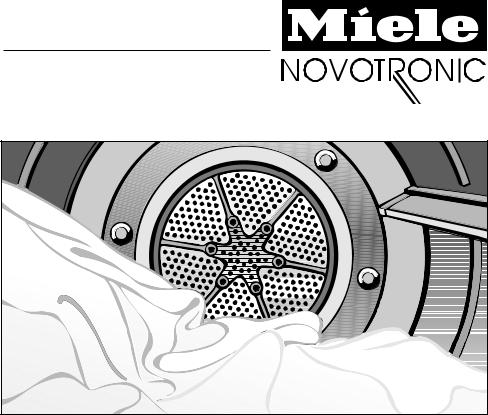
Operating instructions
for condenser tumble dryer T 653 C
It is essential to read these operating instructions before installing or using the machine to avoid the risk of accident, or damage to the machine.
@ä
M.-Nr. 05 155 491

Contents
Guide to the appliance. . . . . . . . . . . . . . . . . . . . . . . . . . . . . . . . . . . . . . . . . . . . . . 4
Caring for the environment . . . . . . . . . . . . . . . . . . . . . . . . . . . . . . . . . . . . . . . . . 6
Warning and safety instructions . . . . . . . . . . . . . . . . . . . . . . . . . . . . . . . . . . . . . 7
Brief instructions . . . . . . . . . . . . . . . . . . . . . . . . . . . . . . . . . . . . . . . . . . . . . . . . . 10
Notes on laundry care . . . . . . . . . . . . . . . . . . . . . . . . . . . . . . . . . . . . . . . . . . . . . 11
How to dry correctly
Hints on saving energy . . . . . . . . . . . . . . . . . . . . . . . . . . . . . . . . . . . . . . . . . . . . . 12 Switching on and loading . . . . . . . . . . . . . . . . . . . . . . . . . . . . . . . . . . . . . . . . . . . 12 Selecting a programme . . . . . . . . . . . . . . . . . . . . . . . . . . . . . . . . . . . . . . . . . . . . . 13 Selecting additional option(s) . . . . . . . . . . . . . . . . . . . . . . . . . . . . . . . . . . . . . . . . 13 Starting a programme . . . . . . . . . . . . . . . . . . . . . . . . . . . . . . . . . . . . . . . . . . . . . . 13 After drying . . . . . . . . . . . . . . . . . . . . . . . . . . . . . . . . . . . . . . . . . . . . . . . . . . . . . . 14
Additional options . . . . . . . . . . . . . . . . . . . . . . . . . . . . . . . . . . . . . . . . . . . . . . . . 15
Programme chart . . . . . . . . . . . . . . . . . . . . . . . . . . . . . . . . . . . . . . . . . . . . . . . . . 16
Altering a programme . . . . . . . . . . . . . . . . . . . . . . . . . . . . . . . . . . . . . . . . . . . . . 18
Electronic system lock . . . . . . . . . . . . . . . . . . . . . . . . . . . . . . . . . . . . . . . . . . . . 19
Programmable functions
General view . . . . . . . . . . . . . . . . . . . . . . . . . . . . . . . . . . . . . . . . . . . . . . . . . . . . . 20 Activating and storing in the memory . . . . . . . . . . . . . . . . . . . . . . . . . . . . . . . . . . 21
2

Contents
Cleaning and care
Cleaning the fluff filters. . . . . . . . . . . . . . . . . . . . . . . . . . . . . . . . . . . . . . . . . . . . . . 22 Cleaning the tumble dryer . . . . . . . . . . . . . . . . . . . . . . . . . . . . . . . . . . . . . . . . . . . 22 Emptying the condensed water container . . . . . . . . . . . . . . . . . . . . . . . . . . . . . . . 23 Cleaning the condenser unit . . . . . . . . . . . . . . . . . . . . . . . . . . . . . . . . . . . . . . . . . 24
Problem solving guide
What to do if ... . . . . . . . . . . . . . . . . . . . . . . . . . . . . . . . . . . . . . . . . . . . . . . . . . . . 26
After sales service
Repairs. . . . . . . . . . . . . . . . . . . . . . . . . . . . . . . . . . . . . . . . . . . . . . . . . . . . . . . . . . 30 Future updates. . . . . . . . . . . . . . . . . . . . . . . . . . . . . . . . . . . . . . . . . . . . . . . . . . . . 30
Installation . . . . . . . . . . . . . . . . . . . . . . . . . . . . . . . . . . . . . . . . . . . . . . . . . . . . . . 32 External condensed water outlet . . . . . . . . . . . . . . . . . . . . . . . . . . . . . . . . . . . . . . 32 Electrical connection . . . . . . . . . . . . . . . . . . . . . . . . . . . . . . . . . . . . . . . . . . . . . . . 34
Consumption data . . . . . . . . . . . . . . . . . . . . . . . . . . . . . . . . . . . . . . . . . . . . . . . . 35
Technical data . . . . . . . . . . . . . . . . . . . . . . . . . . . . . . . . . . . . . . . . . . . . . . . . . . . 36
3
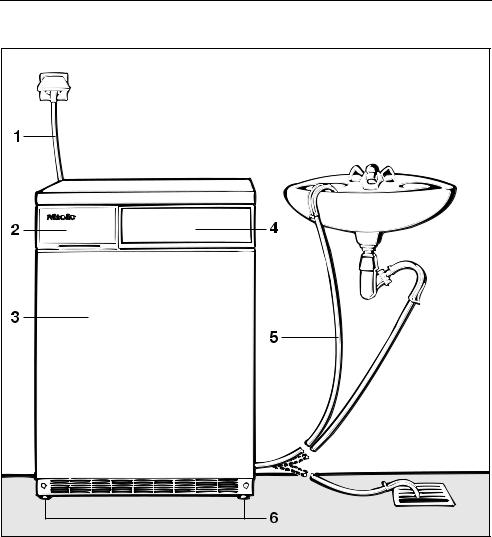
Guide to the appliance
General view
1Supply cable for electrical connection
2Condensed water container
3Door
4Control panel
5Drain hose for condensed water
6Four height-adjustable screw feet
4
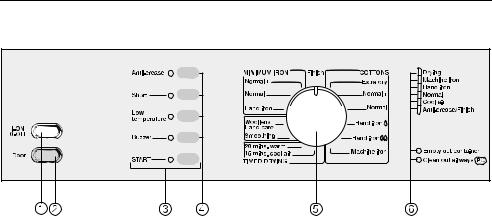
Guide to the appliance
Control panel
b“I-On/0-Off” button
for switching the appliance on and off. When the machine is switched on, the drum light will come on as you open the door.
c“Door” button
to open the door/cancel a programme. This button does not stay pressed in.
d“START” button
starts a drying programme. The indicator light:
–flashes to indicate that the programme can be started;
–remains on once the programme has commenced.
eAdditional option buttons
Indicator lights: on= option selected off= option not selected
fProgramme selector
can be turned clockwise or anti-clock- wise.
gSequence indicator and check lights
Please consult the section “Problem solving guide” for the check lights.
5

Caring for the environment
Disposal of packing
The transport and protective packing has been selected from materials which are environmentally friendly for disposal and can normally be recycled. Rather than just throwing these materials away, please ensure they are offered for recycling.
Disposal of your old machine/appliance
Old machines/appliances contain materials which can be recycled. Please contact your dealer, your local waste collection centre or scrap merchant about potential recycling schemes. Ensure that the machine/appliance presents no danger to children while being stored for disposal. See the appropriate advice in the “Warning and safety” instructions.
6
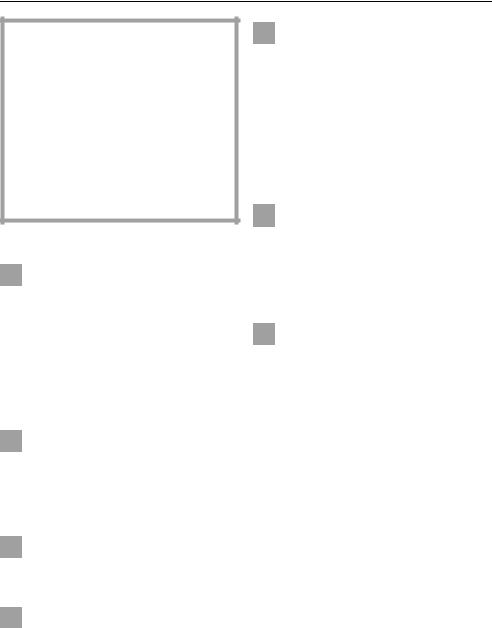
Warning and safety instructions
Please read the operating instructions before using the tumble dryer for the first time. They contain important information about the safety, use and maintenance of the machine. This will avoid the risk of accidents and damage to the machine. Keep these operating instructions in a safe place and ensure that new users are familiar with the content. Pass them on to any future owners of the machine.
Correct usage
The tumble dryer is only intended for drying fabrics which have been
washed in a water solution and are marked on the manufacturer’s wash care label as being suitable for tumble drying.
Any other applications may be dangerous. The manufacturer is not liable for damage resulting from improper use or operation.
Do not let small children play with the machine and its controls or
operate it. Please supervise its use by the elderly or infirm.
Technical safety
Check for visible external damage before installation.
Do not install or operate a damaged machine or appliance.
Before connecting the machine, ensure that the connection data on
the data plate (fusing, voltage and frequency) matches the mains electricity supply. If in any doubt, consult a qualified electrician.
The electrical safety of this machine can only be guaranteed
when continuity is complete between the appliance and an effective earthing system which complies with local and national regulations. It is most important that this basic safety requirement is regularly tested by a qualified electrician. The manufacturer cannot be held responsible for the consequences of an inadequate earthing system.
The machine is built in accordance with current safety requirements.
Unauthorised repairs could result in unforeseen dangers for the user, for which the manufacturer cannot accept responsibility. Repairs should only be undertaken by a Miele approved engineer.
In the event of a fault, or for cleaning purposes, the machine is only completely isolated from the electricity
supply when:
–the plug is withdrawn, or
–it is switched off at the mains, or
–the mains fuse is withdrawn.
7

Warning and safety instructions
If the appliance is supplied from a cord extension set or electrical port-
able outlet device the cord extension set or electrical portable outlet device should be positioned so it is not subject to splashing or ingress of moisture.
For safety reasons, do not use an extension cable. There is a
danger of overheating.
Faulty components must only be exchanged for Miele original spare
parts. Only when these parts are fitted can the safety standards of the machine be guaranteed.
Use
A washer and dryer should never be stacked without using the
proper stacking kit. Doing so is extremely dangerous, as the dryer may vibrate off of the washing machine during use.
Young children should be supervised to ensure that they do not
play with the appliance.
Do not let small children play with the machine and its controls or
operate it. Please supervise its use by the elderly or infirm.
Do not install the machine in a room where the temperature may
drop below freezing, as temperatures below zero could damage the machine.
Frozen condensed water in the pump, hose and condensed water container could also lead to damage.
In areas which may be subject to infestation by cockroaches or
other vermin, pay particular attention to keeping the appliance and its surroundings in a clean condition at all times.
Any damage which might be caused by cockroaches or other vermin will not covered by the appliance guarantee.
If the water is drained externally through the drain hose instead of
being collected in the condensed water container, make sure the drain hose is securely attached if you hang it in a sink or basin to avoid the hose slipping and the water causing damage.
Condensed water is not drinking water. It can cause health prob-
lems in people and animals.
Always close the door after use to avoid the danger of:
–someone leaning on the door which could cause the machine to tip;
–children climbing into the machine or hiding objects in it.
8

Warning and safety instructions
There is a danger of fire with fabrics which:
–contain rubber, foam rubber or rub- ber-like materials;
–have been treated with inflammable cleaning agents;
–have been splashed with hair lacquer, hair spray, nail varnish remover or similar;
–also padded items (eg cushions, jackets) which have been damaged, as the padding could fall out and catch fire;
–are soiled with grease or oil.
Using accessories
Accessory parts may only be fitted when expressly approved by
Miele. If other parts are used, guarantee, performance and product liability claims may be invalidated.
Disposing of your old machine
Before discarding an old machine, unplug it and render the plug useless. Cut off the cable directly behind
the appliance to prevent misuse.
9

Brief instructions
Brief description
Programmes are selected by turning the programme selector and can be supplemented by pressing the additional option buttons.
Press the “START” button to begin a programme.
The indicator lights in the sequence display (on the right hand side of the control panel) show which stage has been reached in the programme.
The Sensitive system automatically adjusts drying to suit the water quality and ensure more precise results.
The Novotronic controls measure and register the conductivity of the water and compensate for variations to achieve a uniform residual moisture level.
The automatic reversing action turns the drum clockwise and anti-clockwise to loosen the laundry and prevent uneven drying, ensuring good results.
Once the required degree of dryness is achieved, the laundry is allowed to cool down.
At the end of the programme the anticrease action period begins. The drum turns intermittently to reduce the formation of creases and folds.
Programmable functions can be used to select or de-select some of the additional options and introduce further functions. These combinations can be stored in the machine’s memory and called up.
Please read the sections on “Warning and safety” and “Notes on laundry care”.
1Switching the machine on and loading the laundry
Switch on by pressing the “I-On/0- Off” button.
Press the “Door” button to open the door.
Place the laundry loosely in the drum.
Swing the door shut but do not slam it. Do not push on the door to shut it.
2Selecting a programme
Turn the programme selector to the drying level you require.
3Selecting additional option(s)
Press the buttons to switch additional options on or off as required.
4Starting the programme
Press the “START” button.
10
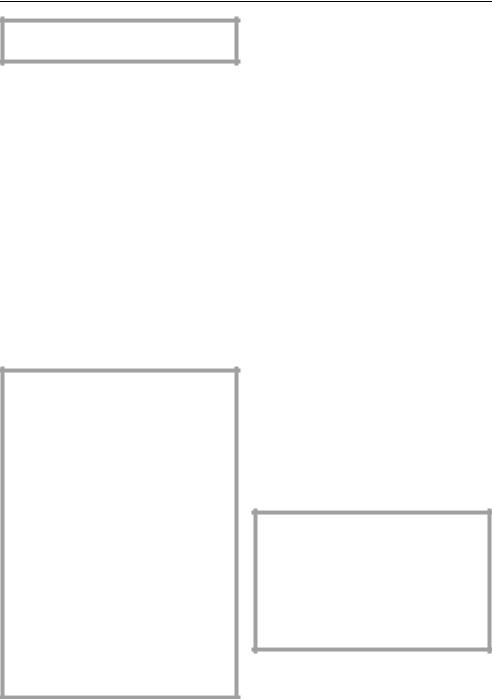
Notes on laundry care
Before drying, check the drying symbol on the textile care label.
Significance of symbols:
q = Dry at normal temperature r = Dry at low temperature
(also push in the “Low temperature” button if required)
s = Do not tumble dry t = Can be tumble dried
If no symbol is featured, dry at your own risk applying the following principles:
Cotton and minimum iron items should be dried in the appropriate programme (see programme charts).
For delicate fabrics, eg acrylic, select "Minimum iron" and also press the "Low temperature" button.
The following fabrics should not be dried in a tumble dryer:
–Woollens and wool blends
These fabrics tend to become matted and shrink. These fabrics can, however, be partially dried using the “Woollens hand care” programme.
–Down-filled items*
The fine fabric interior tends to shrink, depending on the quality.
– Pure linen*
These items should only be machine dried if specified as suitable by the manufacturer on the textile care label, as the surface of the fabric may otherwise “roughen”.
* Linen and down-filled items can, however, be patially dried using the “Smoothing” programme.
Notes:
Some woven and loopknit materials (eg T-shirts, cotton jersey material) have a tendency to shrink, depending on their quality, and this is often made worse by over-drying. When purchasing woven materials, it is advisable to take their shrinkage properties into account.
Starched washing can be dried in the tumble dryer. In order to achieve the usual finish, double the amount of starch should be used.
Minimum iron shirts or blouses in 100% cotton may crease badly, depending on the quality and weave. Try drying these items using the “Hand iron” setting but if this is unsatisfactory use the "Smoothing" setting, then hang the garments on a hanger to dry.
Minimum iron fabrics tend to crease more, the larger the drying load, particularly when the weave of the fabric is very fine. The load should be reduced to
1.5 kg or, if necessary, to 1 kg.
New dark-coloured fabrics should be dried separately from light-coloured fabrics to avoid colours running.
Never overload the drum. Always observe the maximum recommended loads given in the “Programme chart”. Overloading can cause unnecessary wear and tear to the laundry, give a disappointing drying result and cause more creasing.
11
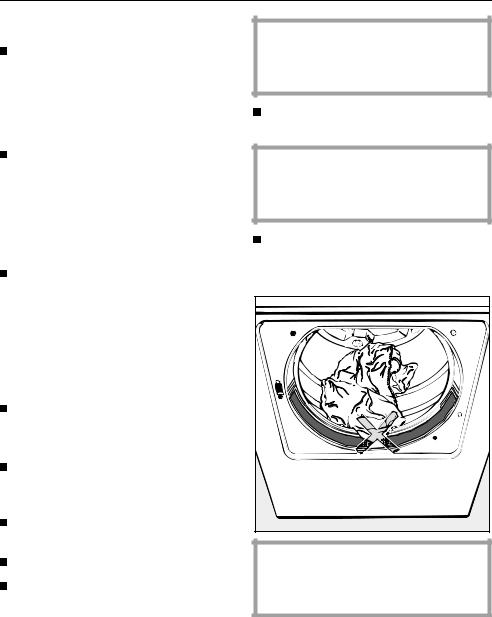
How to dry correctly
Hints on saving energy
Make sure that your laundry has been thoroughly spun at the highest appropriate spin speed before drying. Spinning at 1600 rpm, for example, saves approximately 30% energy and time compared with 800 rpm.
Load the full amount of laundry according to the programme chosen (see “Programme chart”) for the most economical drying related to the size of the load. Make sure that the drum is not overor underloaded.
As far as possible, sort fabrics for:
–the type of fibre or weave
–the degree of drying required
–similar size of items
–the moisture content after spinning.
This will help towards an even drying result.
Ensure the room is well ventilated.
1Switching on and loading
Fasten duvet covers etc to prevent small items from being rolled up inside them.
Do up zips and tie fabric belts and apron strings.
Press the “l-On / 0-Off” button.
Press the “Door” button and open the door.
Make sure there is no washing detergent dispenser among the laundry, as this could melt and damage the machine and the laundry.
Load the laundry very loosely into the drum.
Do not overload the drum. Overloading can cause unnecessary wear and tear to the laundry and give a disappointing drying result.
Shut the door with a light swing but do not slam it. Do not push on the door to shut it.
Important: Please check that items of laundry cannot be trapped by the door, as this will cause damage to the fabric.
12
